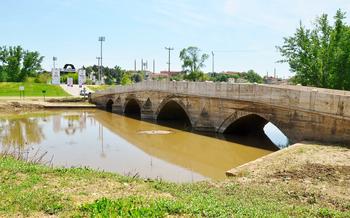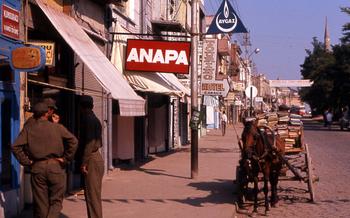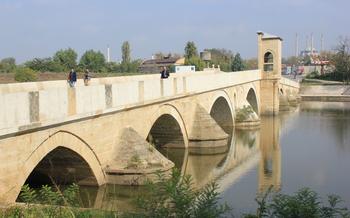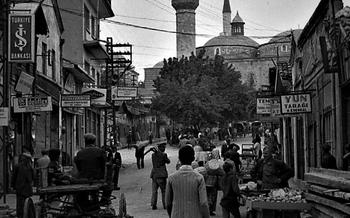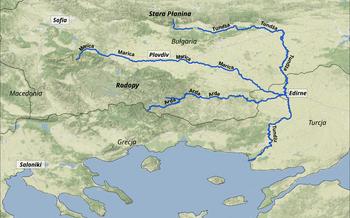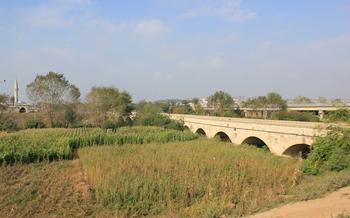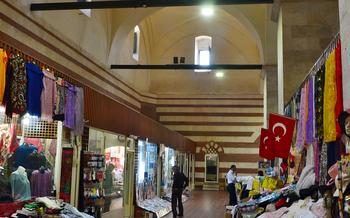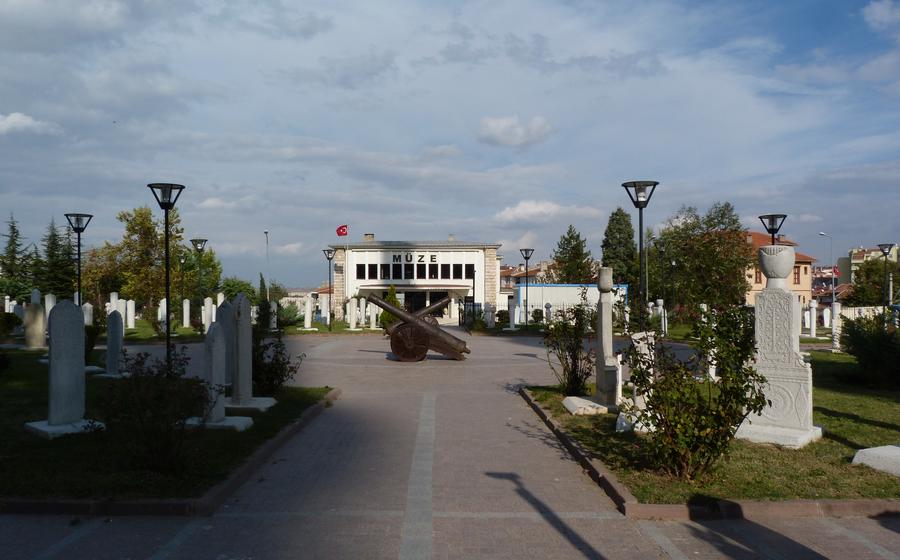
Beyazit II Bridge
- The Beyazit II Bridge: A Stunning Masterpiece
- A Journey Through Time: History Unveiled
- Exploring the Bridge's Environs
- A Photographer's Paradise: Capturing the Essence
- The Bridge in Ottoman Literature and Art
- Literary References
- Artistic Depictions
- Symbolism and Mythology
- Cultural Heritage
- A Haven for Nature Lovers: Unveiling the Ecosystem
- The Bridge as a Symbol of Unity: Past and Present
- Legends and Folklore: Unveiling the Mystique
- The Bridge in Contemporary Turkish Culture
- Experiencing Local Traditions: Festivals and Events
- Practical Tips for Visitors: Planning Your Trip
- Tips for Photography Enthusiasts: Capturing the Essence
- Safety Considerations: Ensuring a Safe Visit
- Sustainability and Responsible Tourism
The Beyazit II Bridge: A Stunning Masterpiece
The Beyazit II Bridge stands as a testament to the ingenuity and craftsmanship of the Ottoman Empire. Built during the reign of Sultan Beyazit II in the 15th century, the bridge played a crucial role in connecting the Ottoman Empire with Europe, facilitating trade and cultural exchange. Its strategic location over the Tunca River made it a vital artery for travelers and merchants.
Historical Significance:
The Beyazit II Bridge holds immense historical significance. It was constructed as part of a larger project to improve the infrastructure of the Ottoman Empire and to strengthen the connection between its eastern and western territories. The bridge served as a vital link between the Ottoman capital, Istanbul, and the Balkans, allowing for the movement of goods, people, and ideas. Its strategic importance contributed to the growth and prosperity of the Ottoman Empire during this period.
Architectural Marvel:
The Beyazit II Bridge is an architectural marvel, showcasing the ingenuity and skill of Ottoman engineers. It features 16 majestic arches that span the Tunca River, creating a graceful silhouette against the backdrop of the surrounding landscape. Constructed using local materials, including stone and brick, the bridge exemplifies the blending of traditional Ottoman architecture with Roman influences.
Panoramic Views:
The Beyazit II Bridge offers breathtaking panoramic views of the surrounding landscape. From the bridge's vantage point, visitors can admire the meandering Tunca River, lush green fields, and distant hills. The bridge provides a unique perspective to witness the beauty of the Turkish countryside and the harmonious coexistence of nature and human ingenuity.
Cultural Importance:
The Beyazit II Bridge holds deep cultural significance for the Turkish people. It serves as a gathering place for locals, who often come to admire its beauty and historical grandeur. The bridge is also a symbol of Turkish craftsmanship and a source of pride for the region. Its enduring presence over the centuries has made it an integral part of the cultural heritage of Edirne and Turkey.
A Journey Through Time: History Unveiled
The construction of the Beyazit II Bridge is a fascinating tale that blends historical significance with architectural prowess. Commissioned by Sultan Beyazit II in the late 15th century, the bridge served as a crucial link between the Ottoman Empire and Europe, facilitating trade, communication, and cultural exchange. Its strategic location on the Tunca River made it a vital passageway for caravans and travelers journeying between the East and the West.
The bridge's architectural design showcases a harmonious blend of Ottoman and Roman influences, reflecting the cultural exchange that characterized the era. Its 16 arches, constructed using local materials such as stone and brick, demonstrate the ingenuity and craftsmanship of Ottoman engineers. The bridge's sturdy construction has withstood the test of time, enduring centuries of wear and tear, natural disasters, and the ever-flowing waters of the Tunca River.
Over the centuries, the bridge has undergone several restorations and renovations, each aimed at preserving its integrity and adapting it to the changing needs of the region. These efforts have ensured that the bridge remains a functional and cherished landmark, connecting people and cultures across time.
The Beyazit II Bridge is not just a historical monument; it is a repository of stories and legends that have been passed down through generations. From tales of heroic battles and daring escapes to mystical encounters and supernatural occurrences, the bridge has captured the imagination of locals and visitors alike. These stories add a layer of enchantment to the bridge, making it a place where history, myth, and reality intertwine.
Exploring the Bridge's Environs
The Beyazit II Bridge is not just a historical marvel but also a gateway to exploring the natural and cultural wonders of Edirne. The Tunca River, a vital waterway that flows beneath the bridge, offers a serene escape from the city's hustle and bustle. Along its banks, you'll find idyllic picnic spots, inviting you to relax and soak in the tranquil ambiance.
Indulge in the region's culinary delights by savoring traditional Turkish dishes prepared with fresh local ingredients. From mouthwatering kebabs to delectable pastries, the flavors of Edirne are sure to tantalize your taste buds.
For those seeking a comfortable stay, Edirne offers a range of accommodation options to suit diverse travel needs. From charming guesthouses that exude local character to modern hotels with state-of-the-art amenities, you'll find the perfect place to rest and recharge.
A Photographer's Paradise: Capturing the Essence
The Beyazit II Bridge is a visual masterpiece that attracts photography enthusiasts from around the world. The bridge's unique design, stunning surroundings, and historical significance provide a wealth of opportunities for capturing breathtaking images.
One of the most captivating aspects of the bridge is the play of light at sunrise and sunset. As the sun rises, the bridge's arches cast long shadows across the Tunca River, creating a dramatic silhouette against the golden sky. At sunset, the bridge transforms into a fiery spectacle, with the warm hues of the setting sun reflecting off the water and illuminating the bridge's intricate details.
The bridge's panoramic vistas offer photographers a chance to capture the vastness and beauty of the surrounding landscape. From the bridge's vantage point, photographers can capture sweeping views of the Tunca River, lush green fields, and distant mountains. The bridge itself becomes a prominent feature in these panoramic shots, adding a sense of depth and scale to the composition.
Photographers can also focus on the intricate architectural details of the bridge. The bridge's 16 arches, built using local materials, showcase the skill and craftsmanship of Ottoman engineers. Close-up shots of the arches, pillars, and intricate carvings provide a glimpse into the bridge's rich history and architectural significance.
Beyond the bridge itself, photographers can capture candid moments of local life that convey the vibrant culture and traditions of the region. Locals crossing the bridge, fishermen casting their nets into the river, and children playing along the banks all make for compelling subjects that add a human element to the photographs.
The Bridge in Ottoman Literature and Art
The Beyazit II Bridge has served as a source of inspiration for Ottoman artists and writers for centuries. It is featured prominently in Ottoman literature, appearing in poems, stories, and travelogues. These literary works often extol the bridge's architectural beauty, its strategic importance, and its role as a symbol of Ottoman power and prestige.
Literary References
One of the most famous literary references to the bridge is found in the 16th-century travelogue of Evliya Çelebi. Çelebi describes the bridge in detail, marveling at its size and grandeur. He also recounts the legend of how the bridge was built by a single architect in just 40 days. This legend highlights the bridge's miraculous nature and its association with divine intervention.
Artistic Depictions
The bridge has also been depicted in numerous paintings, engravings, and miniatures. These artworks provide a valuable visual record of the bridge's appearance over the centuries. They also offer insights into the cultural and historical significance of the bridge. For example, a 17th-century miniature by the artist Matrakçı Nasuh depicts the bridge as a bustling hub of activity, with merchants, travelers, and soldiers crossing the river.
Symbolism and Mythology
The Beyazit II Bridge has also become a symbol of Turkish mythology and folklore. In one legend, the bridge is said to be guarded by a giant serpent that devours anyone who tries to cross it. This legend may reflect the bridge's strategic importance and the dangers that travelers faced when crossing the Tunca River.
Cultural Heritage
The bridge's rich history and cultural significance make it an integral part of Turkey's cultural heritage. It is a symbol of the country's architectural prowess, its military might, and its cultural diversity. The bridge is also a reminder of the strong ties that have existed between Turkey and Europe for centuries.
A Haven for Nature Lovers: Unveiling the Ecosystem
The Beyazit II Bridge is not just a historical and architectural marvel; it is also a haven for nature lovers. The bridge's surroundings are home to a diverse array of flora and fauna, making it an ideal destination for those who appreciate the beauty of the natural world.
The Tunca River, which flows beneath the bridge, is a vital waterway that supports a rich ecosystem. The river is home to a variety of fish species, as well as migratory birds that stop over during their long journeys. The riverbanks are adorned with lush vegetation, providing a habitat for numerous insects, reptiles, and amphibians.
Visitors to the bridge can take advantage of the many opportunities for outdoor recreation. There are several picnic spots along the riverbanks, where visitors can relax and enjoy the natural scenery. There are also opportunities for fishing, birdwatching, and nature photography.
The bridge's location at the crossroads of Europe and Asia makes it a unique and fascinating place to study the natural world. The area is home to a diverse mix of plant and animal species, reflecting the region's rich cultural and historical heritage.
In recent years, there has been a growing awareness of the importance of protecting the natural environment around the Beyazit II Bridge. Several conservation projects have been undertaken to preserve the area's unique ecosystem. These projects have focused on protecting the river's water quality, restoring native vegetation, and creating wildlife habitats.
As a result of these efforts, the bridge and its surroundings are now a thriving natural oasis. Visitors can enjoy the beauty of the natural world while also learning about the importance of conservation and sustainability.
The Bridge as a Symbol of Unity: Past and Present
The Beyazit II Bridge stands as a testament to the power of unity, connecting cultures, facilitating trade, and fostering cooperation throughout history. During the Ottoman Empire, the bridge served as a vital link between the empire and Europe, promoting cultural exchange and economic growth. It symbolized peace and friendship between neighboring nations, creating opportunities for dialogue and understanding. Today, the bridge continues to embody these values, representing the unity and diversity of the Turkish people. It is a symbol of national pride, reminding visitors of the rich history and shared heritage that binds the region together. The bridge's enduring significance lies in its ability to bridge divides, promote cross-cultural dialogue, and inspire cooperation for a brighter future.
Legends and Folklore: Unveiling the Mystique
Veiled in mystery and intrigue, the Beyazit II Bridge has inspired a rich tapestry of legends and folklore, passed down through generations by the local people of Edirne. These captivating tales add an enchanting aura to the bridge's already storied history, inviting visitors to delve into the realm of the supernatural and the unknown.
Among the most prominent legends is the tale of the bridge's guardian spirit, a benevolent entity said to watch over the structure and protect it from harm. According to local lore, this spirit manifests in various forms, sometimes appearing as a wise old man, a majestic bird, or a shimmering light.
Another popular legend tells of a hidden treasure buried beneath the bridge's foundations. It is said that this treasure was amassed by a wealthy merchant who crossed the bridge during the Ottoman era. Fearing for its safety, he buried the treasure beneath the bridge, entrusting its protection to the guardian spirit.
Stories of supernatural encounters and unexplained phenomena also abound. Locals speak of ghostly apparitions, eerie sounds, and mysterious lights that emanate from the bridge at night. Whether these tales hold any truth or not, they add an element of mystery and intrigue to the bridge's allure, captivating the imaginations of visitors and locals alike.
These legends and myths are deeply embedded in the cultural fabric of Edirne, reflecting the region's rich history and vibrant storytelling tradition. They serve as a reminder that the Beyazit II Bridge is not just a historical landmark but also a place of mystery and wonder, where the boundaries between the real and the imagined blur.
The Bridge in Contemporary Turkish Culture
The Beyazit II Bridge continues to hold a significant place in contemporary Turkish culture, serving as a source of inspiration and pride. Modern-day references to the bridge can be found in literature, art, and popular culture, reflecting its enduring legacy. One notable example is the novel "The Bridge on the Drina" by Ivo Andrić, which features a fictionalized version of the bridge as a symbol of resilience and continuity amidst the turmoil of history.
The bridge has also become a symbol of resilience, having withstood numerous challenges throughout its history, including earthquakes, floods, and wars. Its ability to endure these trials has made it a source of national pride for the Turkish people, who see it as a testament to their strength and perseverance.
Furthermore, the bridge continues to inspire future aspirations and plans for its development and preservation. There are ongoing efforts to restore and maintain the bridge's structural integrity, ensuring that it remains a symbol of Turkish heritage for generations to come.
Experiencing Local Traditions: Festivals and Events
Immerse yourself in the vibrant local culture surrounding the Beyazit II Bridge by participating in traditional festivals and events held nearby. These celebrations offer a unique opportunity to witness Turkish customs, music, and dance firsthand. Indulge in culinary delights, savor traditional Turkish cuisine, including regional specialties and delicacies, prepared with fresh local ingredients. Discover unique handicrafts and souvenirs inspired by the bridge and its surroundings, supporting local artisans and preserving traditional crafts. Engage with friendly locals and learn about their way of life, creating lasting memories and fostering cross-cultural understanding.
Practical Tips for Visitors: Planning Your Trip
To make the most of your visit to the Beyazit II Bridge and Edirne, careful planning is essential. Here are some practical tips to ensure a smooth and enjoyable trip:
-
Best time to visit: The best time to visit Edirne and the Beyazit II Bridge is during the shoulder seasons (spring and autumn) when the weather is pleasant, and the crowds are smaller. However, if you prefer warmer weather, consider visiting in the summer months.
-
Transportation options: Edirne is well-connected by various transportation options. You can reach the city by bus from major cities in Turkey, or by train from Istanbul. If you prefer to explore at your own pace, renting a car is a great option.
-
Accommodation choices: Edirne offers a range of accommodation options to suit different budgets and preferences. From budget-friendly guesthouses to comfortable hotels, you'll find plenty of places to stay within easy reach of the bridge.
-
Guided tours: To delve deeper into the history and significance of the Beyazit II Bridge, consider joining a guided tour. These tours often provide insights and anecdotes that you might miss if exploring independently.
Tips for Photography Enthusiasts: Capturing the Essence
As a photography enthusiast, capturing the mesmerizing beauty of the Beyazit II Bridge is an unmissable opportunity. To elevate your photography skills and create captivating images, consider the following tips:
-
Camera Equipment: Choose the right camera equipment for the job. A wide-angle lens will allow you to capture the bridge's grandeur, while a telephoto lens will enable you to zoom in on intricate details. A sturdy tripod will ensure sharp and steady shots, especially during low-light conditions.
-
Lighting Conditions: Understand the significance of lighting in photography. The golden hours, just after sunrise and before sunset, offer the most flattering light for capturing the bridge's warm hues and dramatic shadows. Experiment with different angles and perspectives to harness the power of natural light.
-
Composition Techniques: Composition plays a crucial role in creating visually appealing photographs. Incorporate leading lines, such as the arches of the bridge, to draw the viewer's eye towards the focal point. Experiment with different angles and viewpoints to create dynamic and engaging compositions.
-
Post-Processing Tips: Once you have captured your shots, don't hesitate to enhance them through post-processing. Adjust the exposure, contrast, and colors to bring out the best in your photographs. Utilize editing software to remove unwanted elements and fine-tune the overall look and feel of your images.
Safety Considerations: Ensuring a Safe Visit
When visiting the Beyazit II Bridge, it is essential to prioritize your safety. Follow general safety precautions such as being aware of your surroundings, keeping valuables secure, and avoiding isolated areas. The bridge features safety measures like railings and designated walkways, ensuring a safe passage for visitors. In case of emergencies, familiarize yourself with the emergency procedures and contact information displayed on the bridge. Additionally, respecting local customs and dressing appropriately demonstrates cultural sensitivity and ensures a harmonious visit.
Sustainability and Responsible Tourism
As a responsible traveler, it is essential to minimize your environmental impact and support the local community. When visiting the Beyazit II Bridge, embrace sustainable tourism practices by reducing waste, conserving water, and choosing eco-friendly transportation options. Support local businesses by dining at traditional restaurants, shopping at local markets, and booking tours with local operators. This not only contributes to the local economy but also ensures that tourism benefits the entire community. Respect the cultural heritage of the region by preserving historical sites and artifacts and engaging with locals in a respectful manner. Promote cross-cultural understanding by interacting with locals, learning about their way of life, and sharing your own experiences. By embracing responsible tourism, you can help preserve the beauty and authenticity of the Beyazit II Bridge and its surroundings for generations to come.
